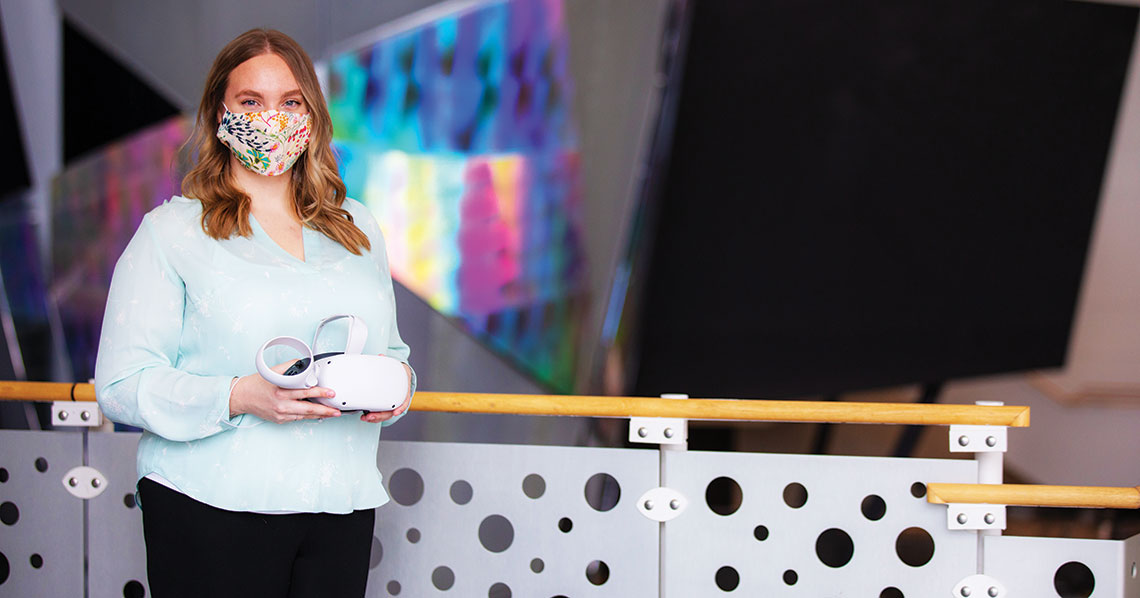Virtual Reality, Real Cybersickness
Cybersickness. No, it’s not being tired of the constant stream of new emails in your inbox. It’s the physical illness some people feel in virtual reality environments.
Angelica Jasper, a Ph.D. student in Human Computer Interaction, is studying how to prevent VR users from experiencing nausea, disorientation, and oculomotor strain.
Motion sickness standing still
“We don’t really know why cybersickness happens physiologically, but a lot of the symptoms are very similar to motion sickness,” Jasper said. “And they show up in three major ways. You have nausea or symptoms related to nausea. You have what’s called oculomotor strain, basically eye strain or issues with your eyes. And general disorientation.
“Cybersickness, compared to motion sickness, occurs with the absence of physical motion. An individual’s eyes and brain are convinced the individual is moving due to what is perceived on the screen they’re viewing, whereas, off screen, their body is at a standstill.”
But even without knowing why cybersickness happens, the need to develop strategies for how to prevent it is growing, all thanks to technological VR advancements made in the education field and workplace – and increasing use of VR for gaming and entertainment.
Considering all angles
In an effort led by Stephen Gilbert, associate professor of industrial and manufacturing systems engineering, Jasper conducts both experimental and survey-based studies of cybersickness.
The team has run participants through a VR experience called The Corn Maze, which was designed to induce cybersickness, and examined individual differences in sickness severity and which mitigation techniques work best (taking the VR headset off was best but switching to a static VR image or doing hand-eye coordination tasks also offer relief).
Now, Jasper is collecting survey data asking participants about their interest in VR, access to head-mounted VR displays, past VR experiences and bouts with cybersickness. Her dissertation will focus on the efficacy of non-invasive cybersickness mitigation techniques, including blurring peripheral vision within VR environments.
“We’re going to be able to use both the survey and experimental research data to help us understand individual differences in cybersickness susceptibility, adaptivity and recovery. We’ll be able to use this information to develop virtual environments that are more widely accessible and usable to people within a variety of settings, including entertainment, education, healthcare and more,” said Jasper.
Human Computer Interaction graduate program
Iowa State University’s multidisciplinary graduate program in Human Computer Interaction (HCI) is an established leader in the study of the human-technology interface.
The HCI program draws on the expertise of Iowa State faculty in engineering, psychology, communications, education and more – as well as researchers at Iowa State’s Virtual Reality Applications Center.
HCI offers a graduate certificate, M.S., or Ph.D., including all-online certificate and master’s degree options. Alumni have gone on to industry and academic positions in a variety of positions in user-centered design, such as usability engineering, product design, software engineering and web development.
